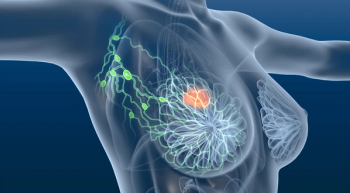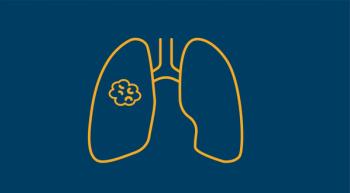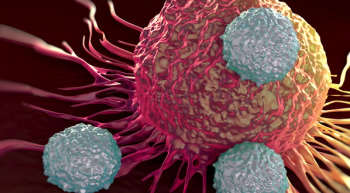
We rounded up 5 stories from the 2022 ASCO Annual Meeting that are of most value to oncology nurses.

Lindsay Fischer is an editor at ONN. She joined MJH life sciences in 2021 after graduating from Rutgers University with majors in both English and Spanish and a minor in creative writing. When she is not writing, or researching the latest oncology nursing news, Lindsay is an amateur backpacker and rollerblader. Email Lindsay at lfischer@mjhlifesciences.com

We rounded up 5 stories from the 2022 ASCO Annual Meeting that are of most value to oncology nurses.

Mary Lynn McPherson, PharmD, BCPS, FAAHPM, and Amy A. Case, MD, FAAHPM, argue that buprenorphine should play a larger role in cancer-related pain management because of its unique pharmacology and consequent safety profile.

Results of a single-center study presented at the 2022 ASCO Annual Meeting showed that oral minoxidil may be effective in treating late alopecia. Moving forward, these efforts in survivorship care will need to be expanded to less resourced areas, experts said.

At the 2022 Supportive Care in Cancer Annual Meeting, Jeffrey Crawford, MD, highlighted the potential value of biosimilars in reducing gaps in care for the treatment of febrile neutropenia.

The FDA has approved lisocabtagene maraleucel as a second-line treatment for patients with relapsed or refractory large B-cell lymphoma.

Laura J. Zitella, MS, RN, ACNP-BC, AOCN, recounts key nursing considerations with targeted therapy for chronic lymphocytic leukemia, and third-line diffuse large b-cell lymphoma options.

Phase 2 findings found that patients with chemotherapy-induced anemia experienced increases in hemoglobin following treatment with roxadustat.

A study analyzing the long-term adrenal insufficiency outcomes of patients receiving immune checkpoint inhibition therapy found that secondary insufficiency was more common than primary in this patient population.

Patients with recurrent C difficile infection receiving SER-109 experienced reduced rates of infection as early as 4 weeks following treatment.

In this episode of “The Vitals,” Sri Kota, MSN, BA, RN, OCN, reflects on nurse-specific takeaways from SABCS 2021, exciting changes in the breast cancer space, and the importance of patient education in the face of new regimens.

A real-world analysis showed that the proportion of women with ovarian cancer who required dose modifications or treatment discontinuations while receiving PARP inhibitors differed significantly between olaparib, niraparib, and rucaparib.

Ken Kato, MD, PhD, a medical oncologist at the National Cancer Center of Tokyo, and investigator in the pivotal CheckMate 648 study, underscores relevant safety data updates from the trial and important symptom management considerations with the FDA-approved combinations.

Elderly patients receiving novel-androgen hormonal therapies, such as abiraterone and enzalutamide, listed forgetfulness as their No. 1 reason for not taking prescribed pills.

Patients with early-stage breast cancer who have low vitamin D counts may be at risk of developing chemotherapy-induced peripheral neuropathy.

Reducing ribociclib dosing by 200 mg or 400 mg did not affect overall survival in patients with hormone receptor–positive, HER2-negative, advanced breast cancer.

Avasopasem was associated with a significant reduction in severe oral mucositis in patients with locally nonmetastatic head and neck cancer undergoing chemoradiotherapy.

Kellie Zeichner, RN, BSN, OCN, discusses the production of biosimilars, their approval and naming processes, and why immunogenicity is important when discussing these agents.

Lisa Vigil Schattinger, MSN, RN, discusses her experience with medical aid in dying, and what oncology nurses need to understand when supporting patients at the end of their lives.

In this episode of The Vitals, Donna Herrera Bell, MSN, APRN, FNP-C, highlights how nurses can eliminate barriers to fertility discussions among adolescent and young adult patients with cancer.

Each month, we take a look back at the most popular Oncology Nursing News® stories. Here are the top 5 stories from May 2022.

Nurse investigators characterized the onset and management of edema and effusion with loncastuximab tesirine in the pivotal LOTIS-2 trial.

Oncology nurses present their experiences treating patients with sotorasib in the phase 1/2 CodeBreaK 100 trial and optimal symptom management strategies to improve patient outcomes with the drug.

An hourly rounding column helped make integrated data points more visible and improve nurse responsiveness on an inpatient floor.

A medication extension set may be the preferred method for subcutaneous hyaluronidase injections compared with a traditional needle.

Michelle Mollica, PhD, MPH, RN, OCN, senior advisor in the NCI Office of Cancer Survivorship, discusses different long-term care considerations for nurses caring for patients with cancer.

Liz Stokes, PhD, JD, RN, director of the Center for Ethics and Human Rights, discusses the nurse’s role in medical aid in dying and common misconceptions.

In patients receiving immune checkpoint inhibition to treat their metastatic urothelial carcinoma, immune-related adverse effects may serve as a prognostic marker for progression-free and overall survival.

Patients with locally advanced muscle invasive bladder cancer may experience superior benefit from gemcitabine and carboplatin if the chemotherapy is co-administered with vitamin c.

Loyda E. Braithwaite, MSN, RN, AGPCNP-BC, AOCNP, highlights nursing considerations in prescribing and administering endocrine therapy to patients with HR+ breast cancer.

Conversations surrounding fertility preservation may differ between young men and women with cancer, according to Donna Herrera Bell, MSN, APRN, FNP-C.